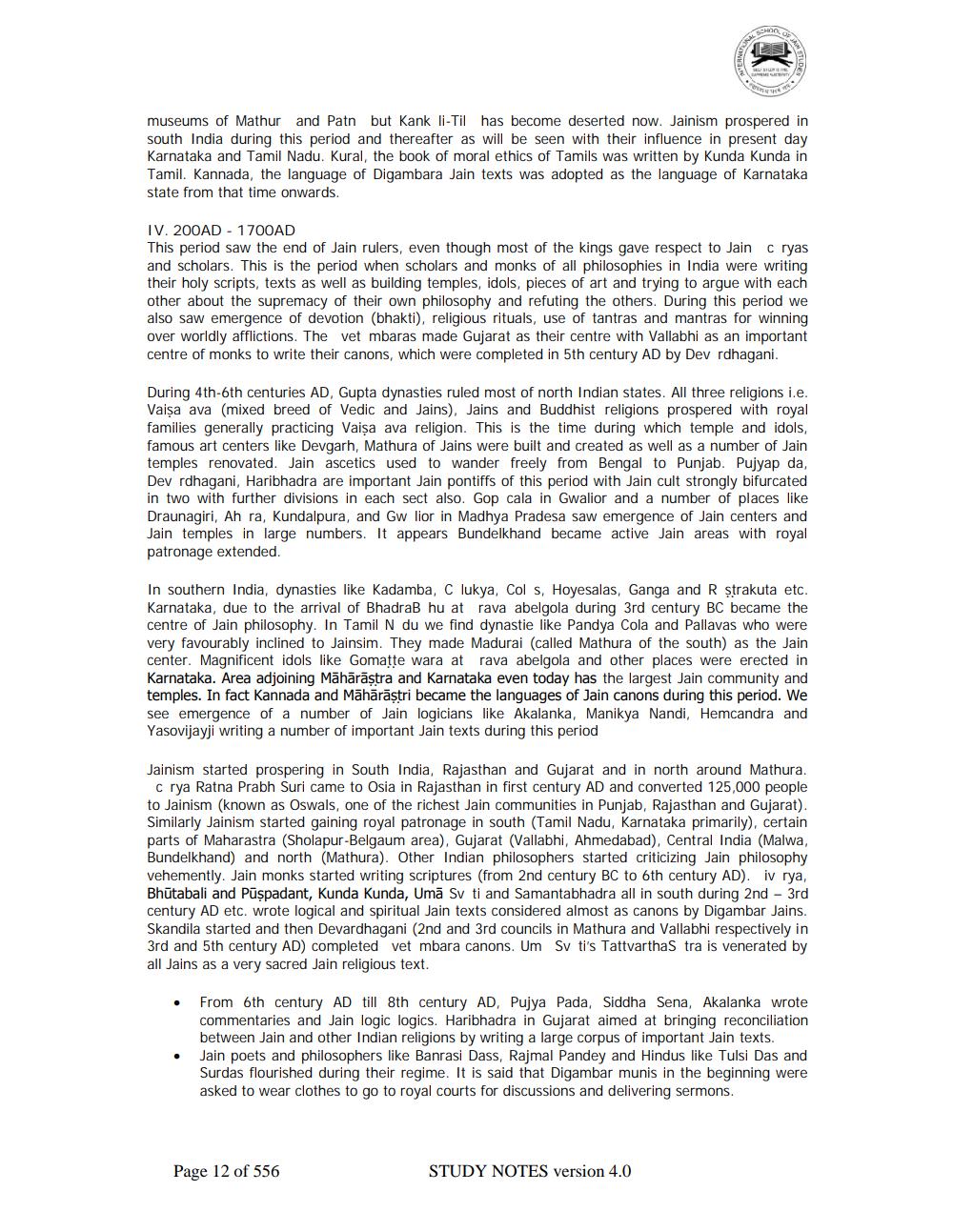________________
museums of Mathur and Patn but Kank li-Til has become deserted now. Jainism prospered in south India during this period and thereafter as will be seen with their influence in present day Karnataka and Tamil Nadu. Kural, the book of moral ethics of Tamils was written by Kunda kunda in Tamil. Kannada, the language of Digambara Jain texts was adopted as the language of Karnataka state from that time onwards.
IV. 200AD - 1700AD This period saw the end of Jain rulers, even though most of the kings gave respect to Jain Cryas and scholars. This is the period when scholars and monks of all philosophies in India were writing their holy scripts, texts as well as building temples, idols, pieces of art and trying to argue with each other about the supremacy of their own philosophy and refuting the others. During this period we also saw emergence of devotion (bhakti), religious rituals, use of tantras and mantras for winning over worldly afflictions. The vet mbaras made Gujarat as their centre with Vallabhi as an important centre of monks to write their canons, which were completed in 5th century AD by Dev rdhagani.
During 4th-6th centuries AD, Gupta dynasties ruled most of north Indian states. All three religions i.e. Vaisa ava (mixed breed of Vedic and Jains). Jains and Buddhist religions prospered with royal families generally practicing Vaisa ava religion. This is the time during which temple and idols, famous art centers like Devgarh, Mathura of Jains were built and created as well as a number of Jain temples renovated. Jain ascetics used to wander freely from Bengal to Punjab. Pujyap da, Dev rdhagani, Haribhadra are important Jain pontiffs of this period with Jain cult strongly bifurcated in two with further divisions in each sect also. Gop cala in Gwalior and a number of places like Draunagiri, Ah ra, Kundalpura, and Gw lior in Madhya Pradesa saw emergence of Jain centers and Jain temples in large numbers. It appears Bundelkhand became active Jain areas with royal patronage extended.
In southern India, dynasties like Kadamba, C lukya, Cols, Hoyesalas, Ganga and R strakuta etc. Karnataka, due to the arrival of BhadraB hu at rava abelgola during 3rd century BC became the centre of Jain philosophy. In Tamil N du we find dynastie like Pandya Cola and Pallavas who were very favourably inclined to Jainsim. They made Madurai (called Mathura of the south) as the Jain center. Magnificent idols like Gomatte wara atrava abelgola and other places were erected in Karnataka. Area adjoining Māhārāstra and Karnataka even today has the largest Jain community and temples. In fact Kannada and Māhārāstri became the languages of Jain canons during this period. We see emergence of a number of Jain logicians like Akalanka, Manikya Nandi, Hemcandra and Yasovijayji writing a number of important Jain texts during this period
Jainism started prospering in South India, Rajasthan and Gujarat and in north around Mathura. Crya Ratna Prabh Suri came to Osia in Rajasthan in first century AD and converted 125,000 people to Jainism (known as Oswals, one of the richest Jain communities in Punjab, Rajasthan and Gujarat). Similarly Jainism started gaining royal patronage in south (Tamil Nadu, Karnataka primarily), certain parts of Maharastra (Sholapur-Belgaum area), Gujarat (Vallabhi, Ahmedabad), Central India (Malwa, Bundelkhand) and north (Mathura). Other Indian philosophers started criticizing Jain philosophy vehemently. Jain monks started writing scriptures (from 2nd century BC to 6th century AD). iv rya, Bhūtabali and Püspadant, Kunda kunda, Umā Sv ti and Samantabhadra all in south during 2nd - 3rd century AD etc. wrote logical and spiritual Jain texts considered almost as canons by Digambar Jains. Skandila started and then Devardhagani (2nd and 3rd councils in Mathura and Vallabhi respectively in 3rd and 5th century AD) completed vet mbara canons. Um Sv ti's Tattvarthas tra is venerated by all Jains as a very sacred Jain religious text.
From 6th century AD till 8th century AD, Pujya Pada, Siddha Sena, Akalanka wrote commentaries and Jain logic logics. Haribhadra in Gujarat aimed at bringing reconciliation between Jain and other Indian religions by writing a large corpus of important Jain texts. Jain poets and philosophers like Banrasi Dass, Rajmal Pandey and Hindus like Tulsi Das and Surdas flourished during their regime. It is said that Digambar munis in the beginning were asked to wear clothes to go to royal courts for discussions and delivering sermons.
Page 12 of 556
STUDY NOTES version 4.0




